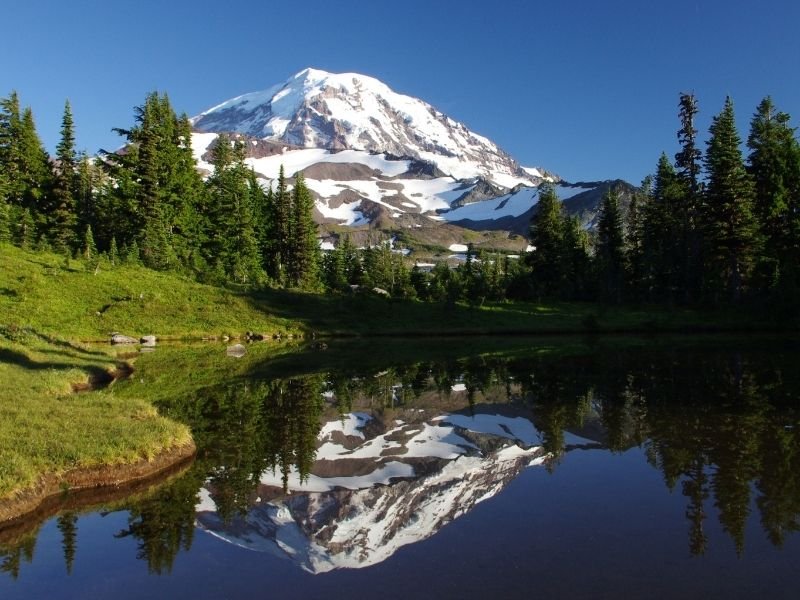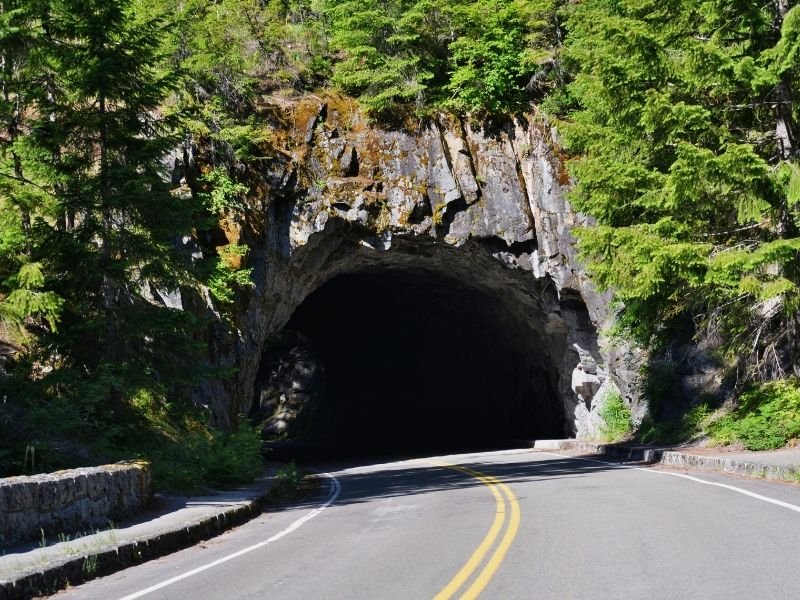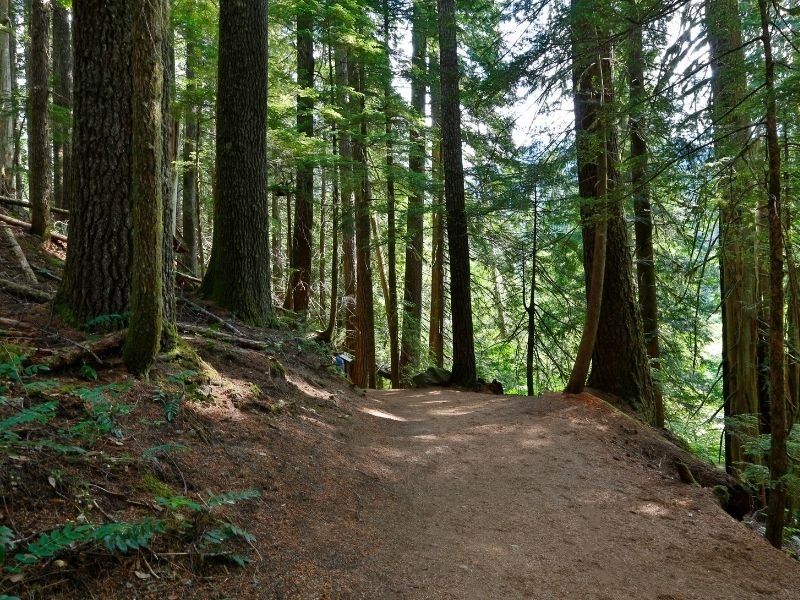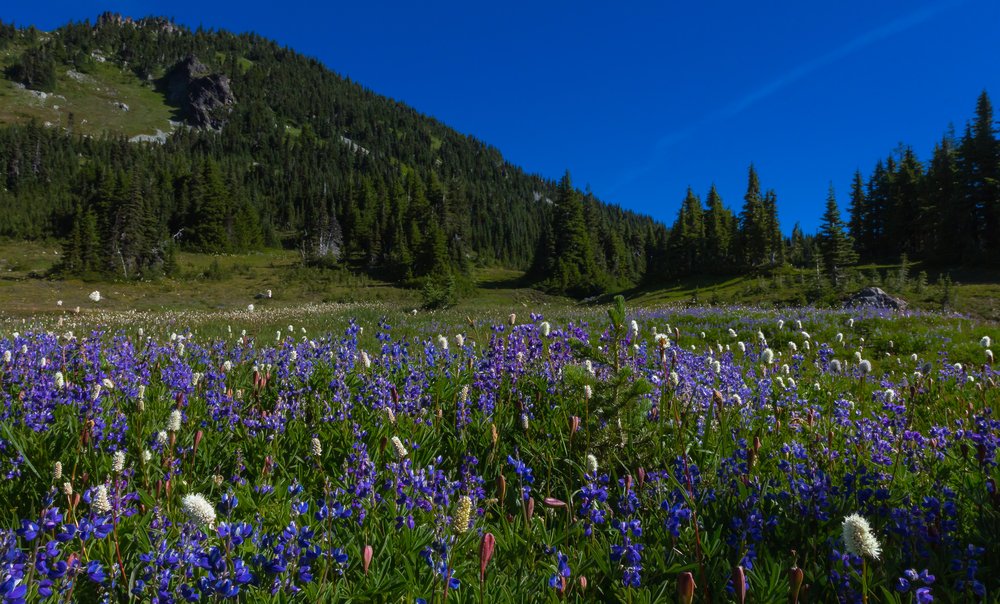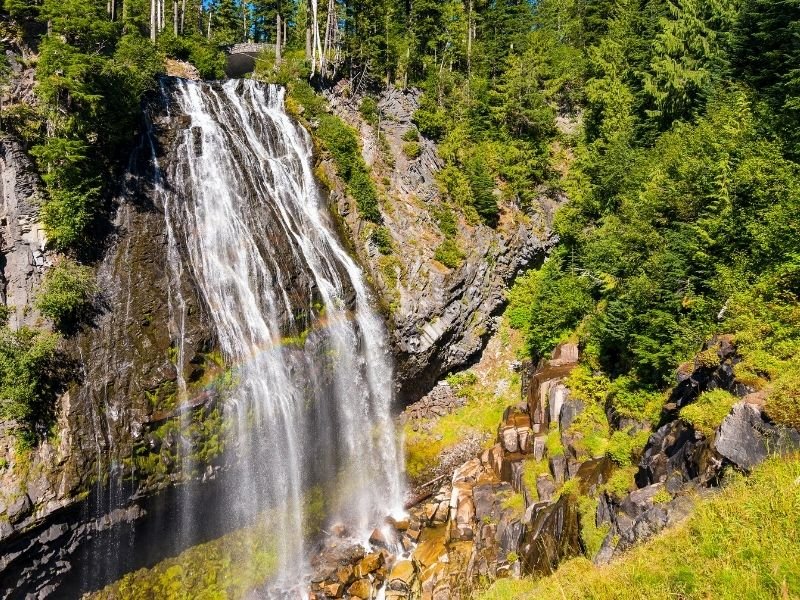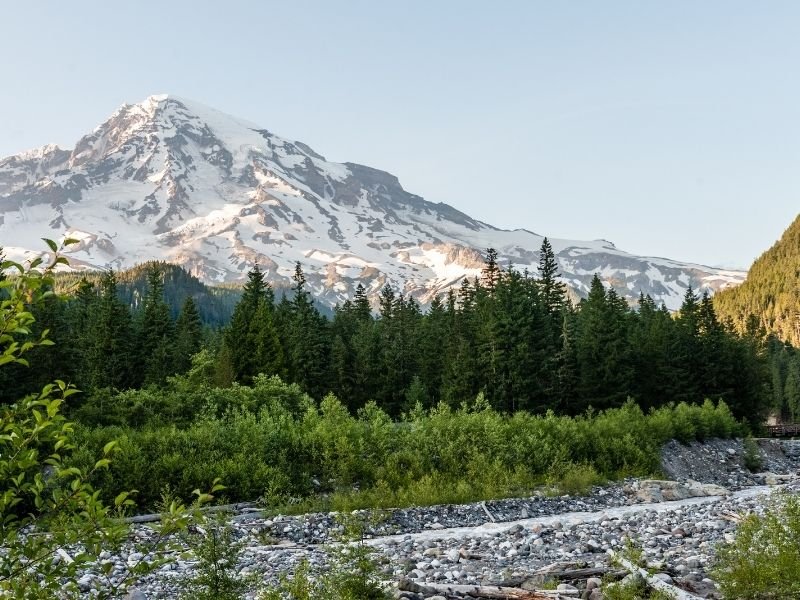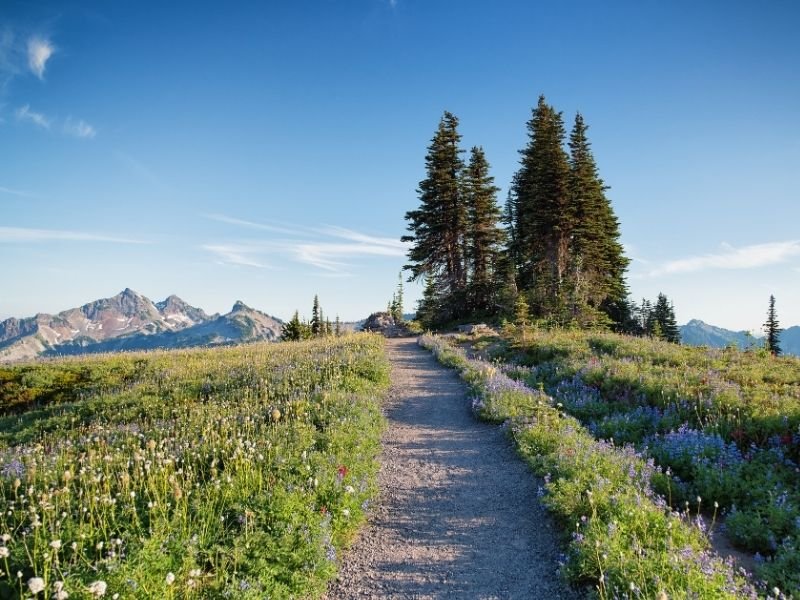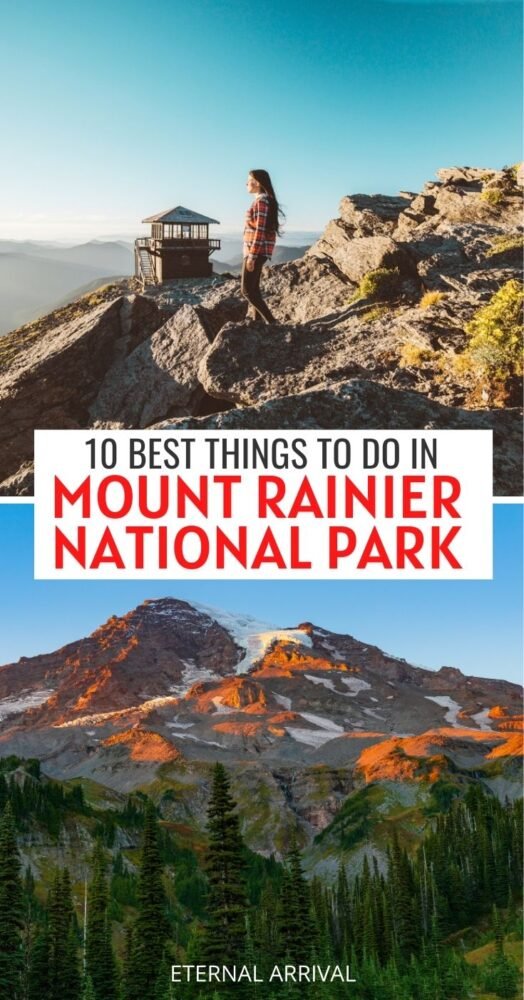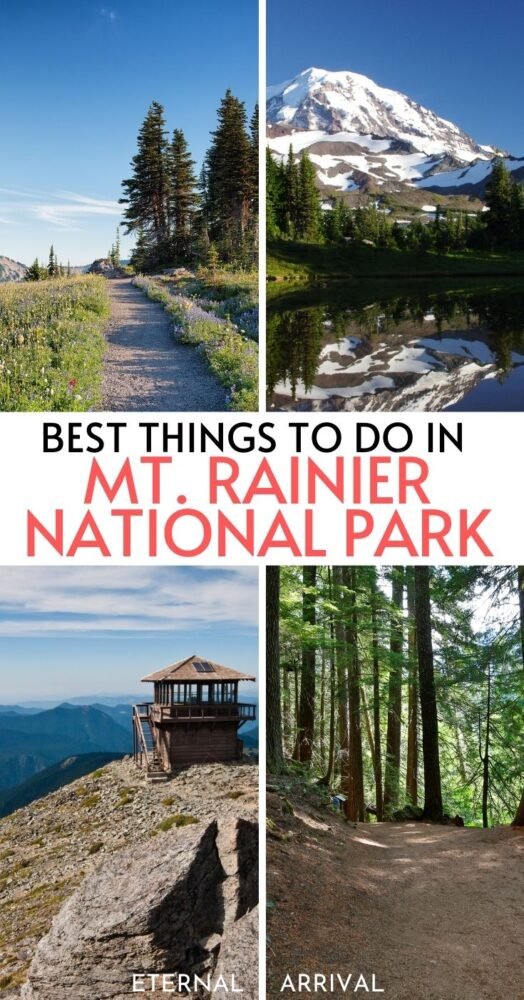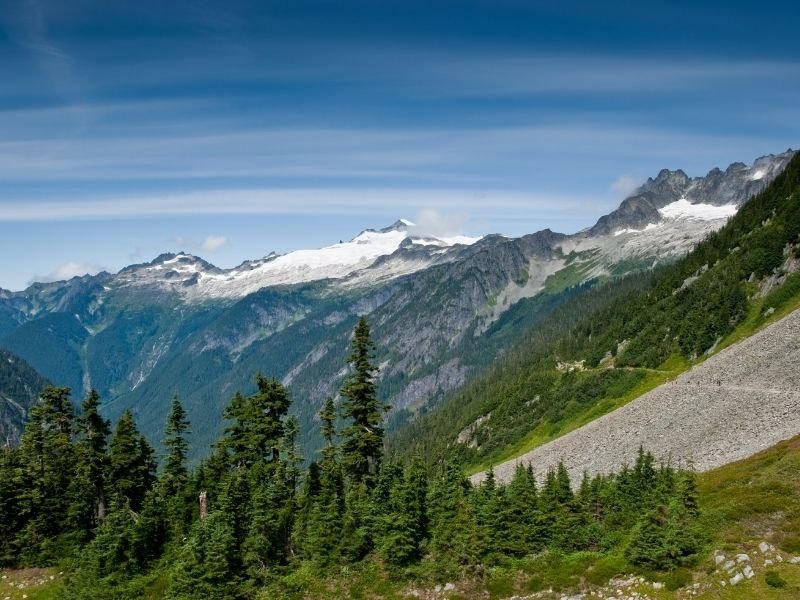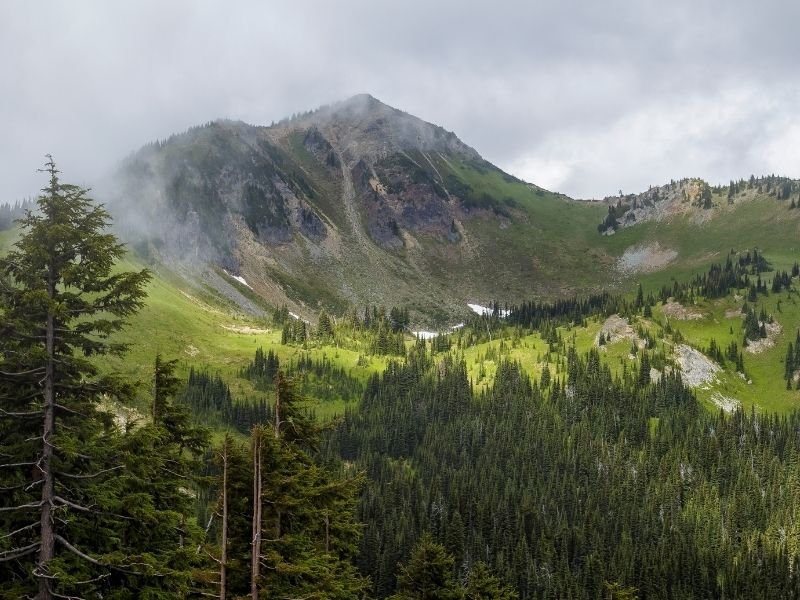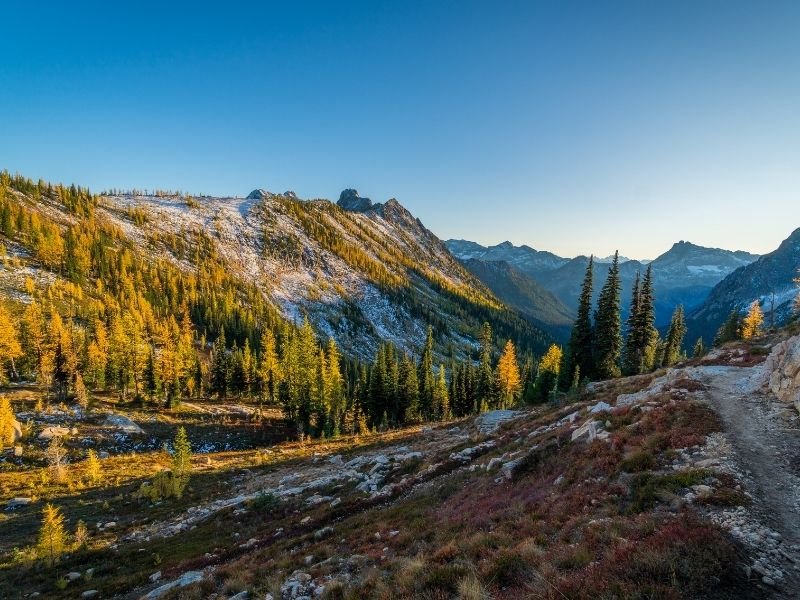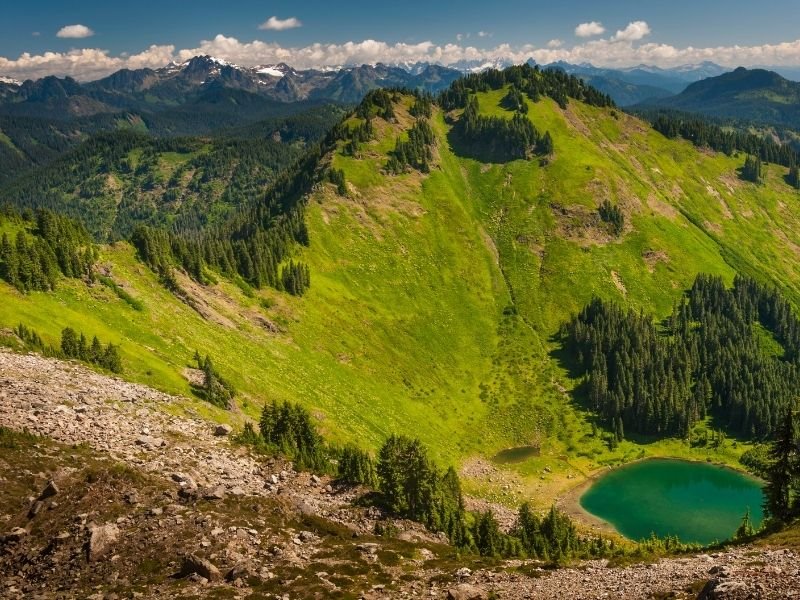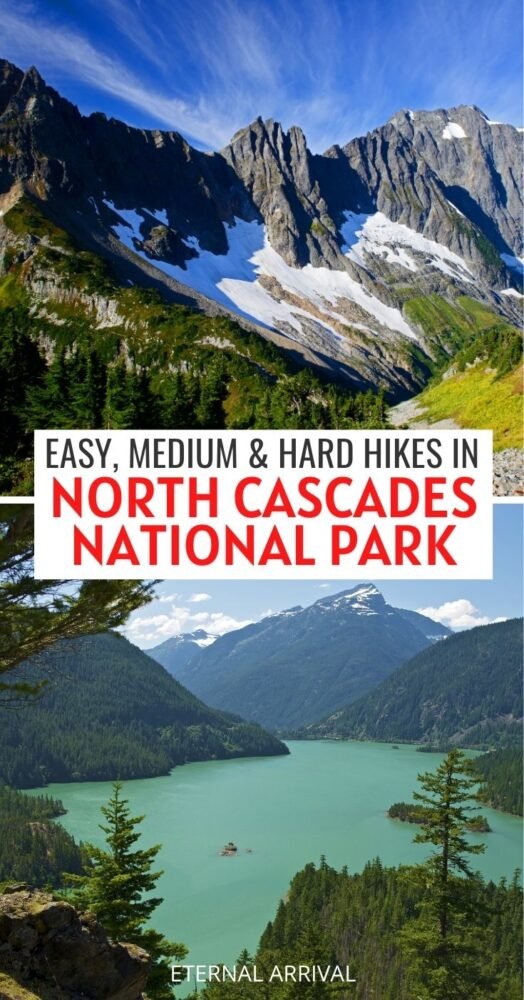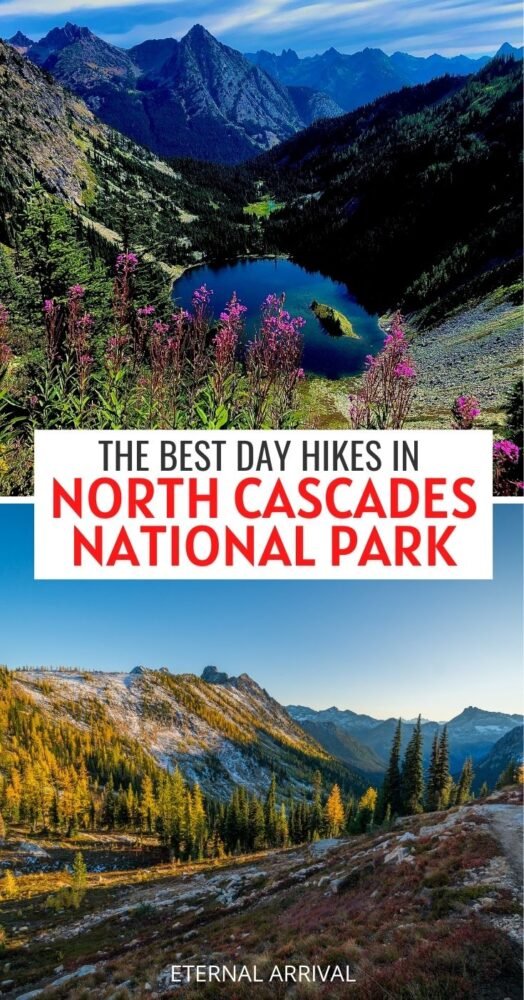Seattle is a fun waterfront city located between Puget Sound and Lake Washington in Northwest Washington.
Known for coffee, bridges, evergreen forests, and rain, there are plenty of things to do on a weekend in Seattle!
Although rainy and dark from November through May, if you visit this beautiful Northwest city in July or August, you will find the perfect temperatures and bright sunshine!
If you ask me, these two months make up for the rest of the year, but then again, I grew up in Seattle, and I might be biased.
A weekend in Seattle isn’t long enough to see everything in the city, but for a quick 2 days in Seattle itinerary, I recommend visiting Downtown and the Fremont and Ballard neighborhoods to experience the best of what the metropolitan city has to offer.
Let’s begin this Seattle itinerary!
Your Weekend in Seattle Itinerary: Day One
Hit the original Starbucks bright and early
Spend Saturday morning exploring downtown Seattle and the many attractions near the waterfront.
Saturday morning is the perfect time to visit the original Starbucks near Pike Place Market, the first stop on this Seattle itinerary.
The Starbucks opens at 7 AM, and is a popular tourist spot, so show up before or around the opening time to avoid the long line.

Wander down the waterfront
With your mocha and pastry in hand, take a stroll along Seattle’s waterfront.
Head north along the piers towards the Olympic Sculpture Park. The Olympic Sculpture Park is a public park created by the Seattle Art Museum, featuring modern and contemporary outdoor sculptures along the beach.
The Sculpture Park is next to Myrtle Edwards Park, a long beachfront park with a walkway, perfect for extending your morning walk.

Head towards the Seattle Great Wheel
Once you’ve finished your coffee and morning snack, wander back the way you came towards the Seattle Great Wheel.
The Seattle Great Wheel is the tallest Ferris Wheel on the West Coast at 175 feet tall.
Although a relatively new Seattle attraction – it opened in 2012 – the wheel has quickly become a staple activity in downtown Seattle.
Riding a Ferris wheel on the pier is a fun way to view the boat traffic and bustle of the city!
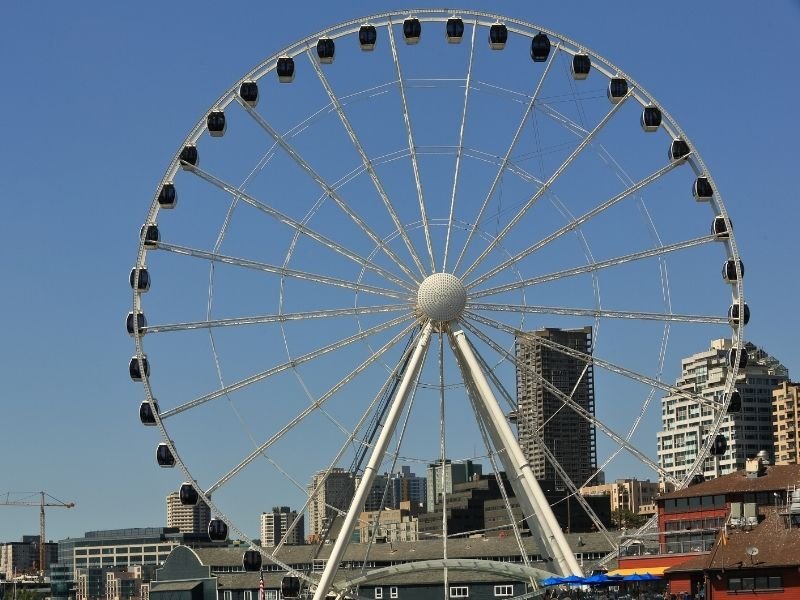
Hit Pike Place Market
After a thrilling ride on the wheel, head up to Pike Place Market.
When you arrive, be sure to look above the market to see the famous sign with the neon letters and clock!
After snapping a picture, enter the market and wander around the businesses.
While exploring the stores, treat yourself and buy a few souvenirs.
As you are wandering, stop by the Market Rummage Hall to sort through the items for treasures and visit the Market Magic Shop and peruse the magic books and tricks throughout the shop.
Rachel’s Ginger Beer is also a local favorite and is located on the corner of Post Alley and Pine Street, right across from Sur La Table.
Tasty on any day, but especially perfect on a bad weather day, try any of the drinks at Rachel’s for a fun treat.
Down in the fourth level of Pike Place Market, visit the Giant Shoe Museum that shares space with the Old Seattle Paperworks store. Just bring a few quarters to drop into the coin boxes to view the giant shoes.
The most notable vendor at the market is Pike Place Fish, fishmongers who throw fish back and forth when someone orders fish!
While you are at the market, choose from the large variety of food and find something for lunch to fully experience the market.

Get grossed out at the Seattle Gum Wall
After lunch, head down to the Seattle Gum Wall.
The gum wall is located in Post Alley underneath the market and is covered in gum stuck to the wall by the box office for the Market Theater.
The gum wall was cleaned in 2015 for the first time in 20 years, and 2350 pounds of gum were removed from the brick wall! Yikes.
However, since 2015, gum has been added to the wall again, and it is a fun tourist attraction that is pretty high on most people’s Seattle itinerary wishlists.
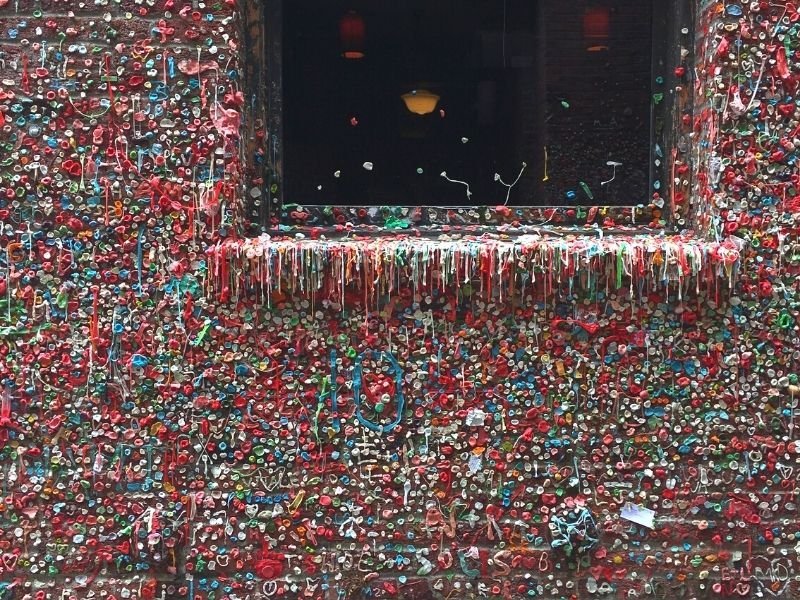
Head over the Seattle Center
From the Gum Wall, walk to the Seattle Center, the location of the Space Needle, built for the 1962 World’s Fair.
When you arrive at the Seattle Center, go to the Space Needle and purchase tickets for a ride to the top.
Tickets for the Space Needle are timed, so if you don’t buy them ahead of time, you can buy tickets for later in the day and return for your ticket time instead of waiting in line.
At your ticket time, join the line and enter the elevator for a ride to the observation deck. The observation deck was recently remodeled with floor to ceiling glass panels to allow visitors an even better viewpoint.
From the top, you can see Mt Rainier and the surrounding Puget Sound on a clear day. On the ride down, the elevator stops at the 500-foot level, a restaurant with a revolving glass floor, before returning to ground-level.
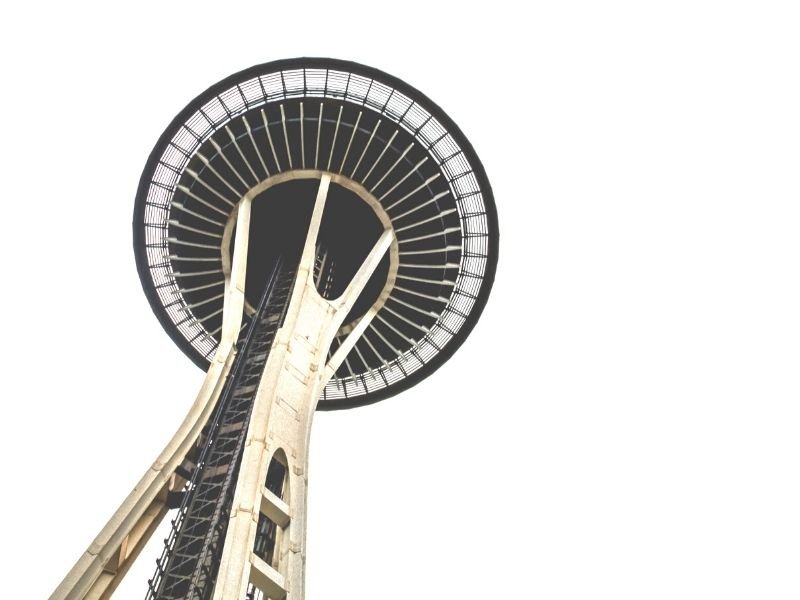
Stop by the Chihuly Glass Museum
While in the Seattle Center, also stop by the Chihuly Glass Museum.
The museum features work by Dale Chihuly, a well-known glassblower from Tacoma, Washington.
The museum features beautiful glass exhibits that will blow you away. The works of art are extraordinary, and the museum is a must-see if you are spending a weekend in Seattle.
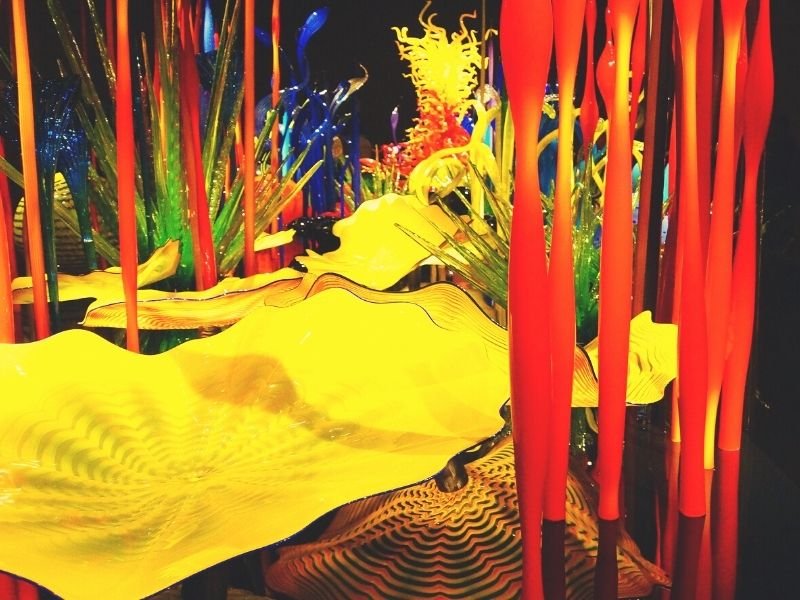
Have a delicious meal at Ivar’s
After visiting the glass museum, visit Ivar’s Fish Bar for dinner. Ivar’s is a Seattle classic, featuring a seafood-based menu.
The Seattle waterfront location of Ivar’s on Pier 54 is the original location of Ivar’s, opened in 1938.
The fish n’ chips and the clam chowder are two local favorites on the menu, although all the food on the menu is popular.
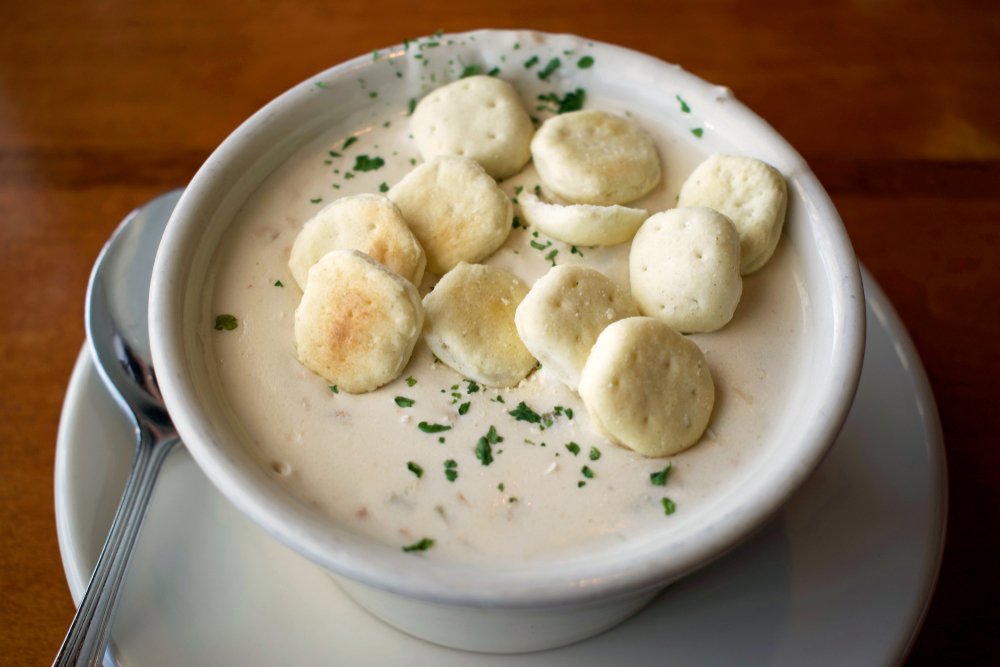
See the sunset from Kerry Park
During the evening, walk up to Kerry Park for sunset, where you will find the best view of downtown Seattle available within the city.
The walk to the park is up a very steep hill but is worth the effort to catch the sun setting over the city.
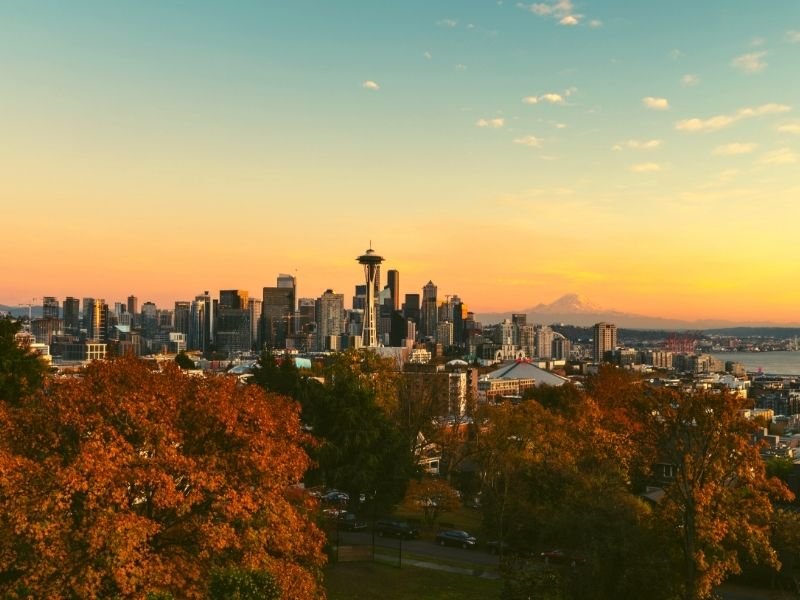
Your Weekend in Seattle Itinerary: Day Two
On Sunday, take the day to explore the neighborhoods of Fremont and Ballard, just north of Lake Union.
These neighborhoods are known as fun and upbeat neighborhoods with plenty of activities and cool shops, bars, and cafés to enjoy.
Grab some breakfast at Sea Wolf Bakers
Start off the day with a visit to Sea Wolf Bakers, on Stone Way in Fremont.
This bakery serves coffee but is best-known for their delicious fresh-baked goods.
Their bread is known as the best in the area, and the croissants have a perfect buttery, crisp texture.

Go on a morning stroll in Gas Works Park
Once you have ordered your morning coffee and pastry (or pastries, if you couldn’t decide on one), take them down to Gas Works Park.
Then, take a seat on the grass on the top of the hill in the center of the park and look out on the view of Lake Union and downtown Seattle while you are enjoying your morning treats.
While in the park, be sure to check out the structures remaining from the former oil plant in the park, where it gets its name.
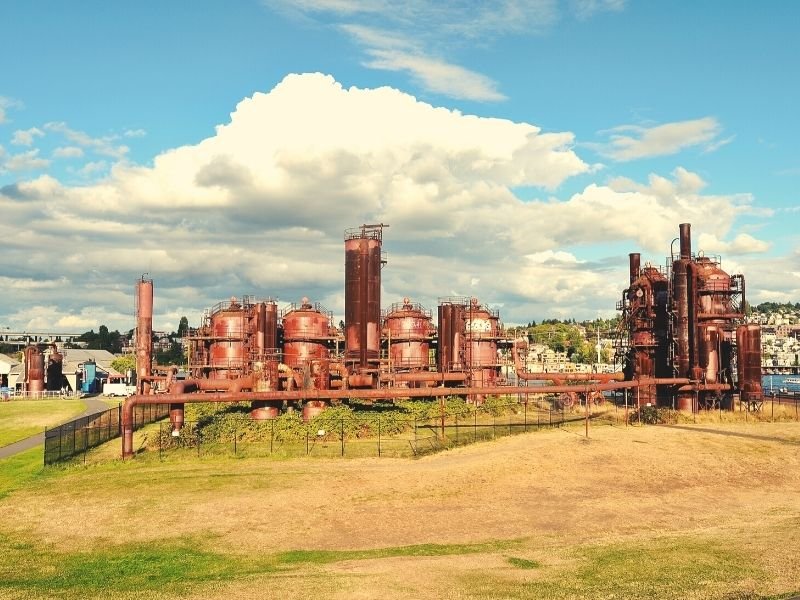
Spot the quirky Fremont Troll
Gas Works Park isn’t the only unique site in Fremont, and it is well worth a walk over to the Fremont Troll from the park.
From Gas Works, walk west along the Burke Gilman Trail, a multi-use pedestrian and cycling trail along the waterfront until you reach the bridge under Aurora Ave N, then turn north and walk up to 36th St.
The Fremont Troll is as its name implies, a large troll statue underneath the bridge! The statue is 6.5 tons, and the best part is the actual VW Bug incorporated in the statue being held by the troll.
This a great spot for a picture, and you can pose either at a safe distance or climb onto the troll if you aren’t afraid.
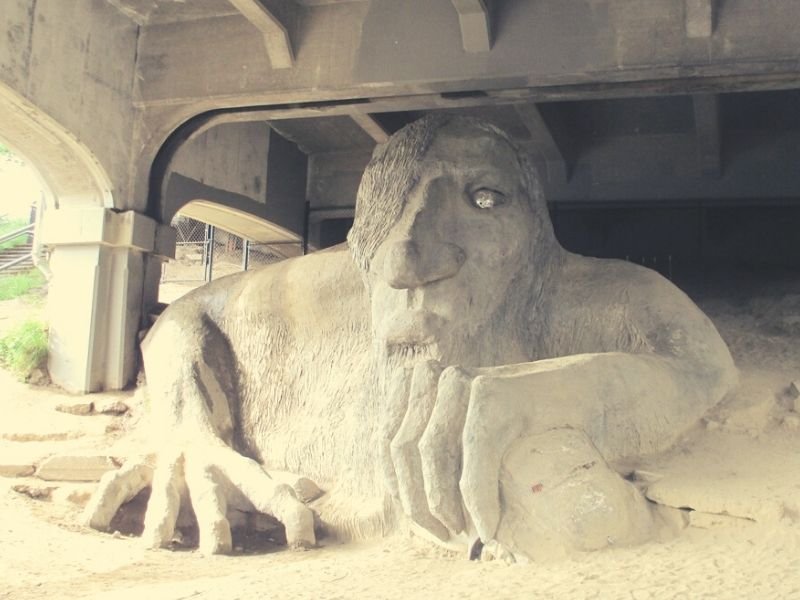
Visit the Sunday Fremont Market
After visiting the troll, walk downhill to the Sunday Fremont Market, a year-round outdoor farmers market held in Fremont along the waterfront.
The farmers market features many local vendors selling fresh produce, street food, handcrafts, and vintage goods.
The market is a great place to find lunch, so browse the vendors with an eye for tasty foods and stop by the food trucks for more options.

Wander towards the Ballard Locks
Just west of the Sunday market is the Ballard Locks, a worthwhile trip to see the marine operations between Puget Sound and Lake Union.
The locks prevent the saltwater of Puget Sound from entering the freshwater of Lake Union, maintain the water level of the lake at 20 feet above sea level, and allow boat passage between the two.
While visiting the Locks, you are likely to see the lock operation as boats pass through. The Ballard Locks also features a fish ladder to allow safe passage for native salmon species!
The largest salmon run through the Locks is Sockeye Salmon, from mid-June through mid-July, but you may see salmon pass through in August or September as well.
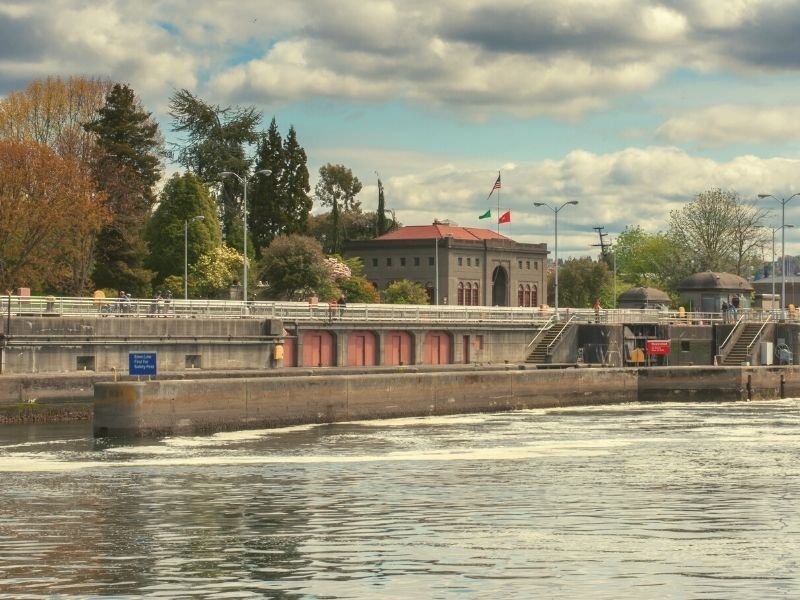
Head towards Discovery Park
Once you’ve seen the locks and fish ladder, continue west to Discovery Park, the largest park in Seattle.
Discovery Park is a beautiful park on the waterfront, with plenty of trails through the forest as well. It even has a lighthouse, West Point Lighthouse!
There are plenty of options for longer and shorter walks, depending on how you are feeling. And if you are tired of walking for the day, the beach makes a great spot to sit!
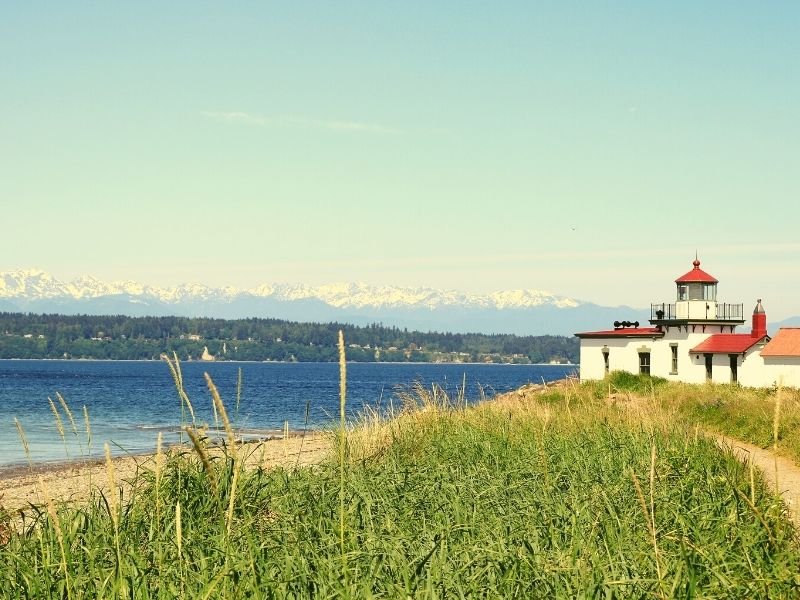
Grab a tasty dinner at the Walrus and the Carpenter
After this packed weekend in Seattle, if you still have time for dinner before returning home, stop at The Walrus and the Carpenter. This cool place is one part restaurant, one part fishing pub.
Here enjoy the delicious fried oysters and a variety of beers, wines, and cocktails amongst the fishing center in Ballard before returning home and plan for your next weekend trip to Seattle!
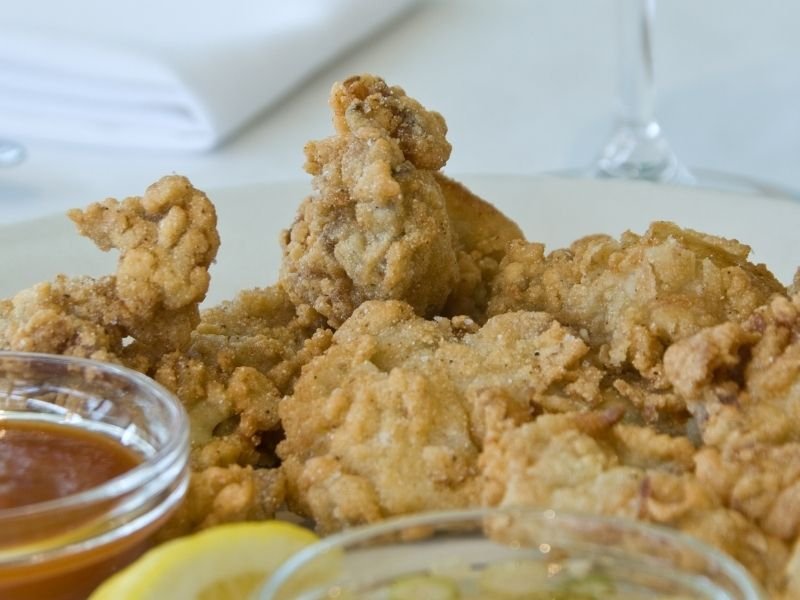
Pin this Weekend in Seattle Itinerary!

Abby Conner loves rugged mountain peaks, old-growth forests, and ferns. She spends as much time as she can outside hiking, camping, climbing, and identifying native plants. Abby firmly believes the West Coast is the Best Coast of the U.S. and denies she could place any of the states east of the Mississippi on a map. After moving around the Western U.S., she is glad to be back in Seattle. Follow her adventures at her blog Cedar Peaks & Trees and on Instagram.


